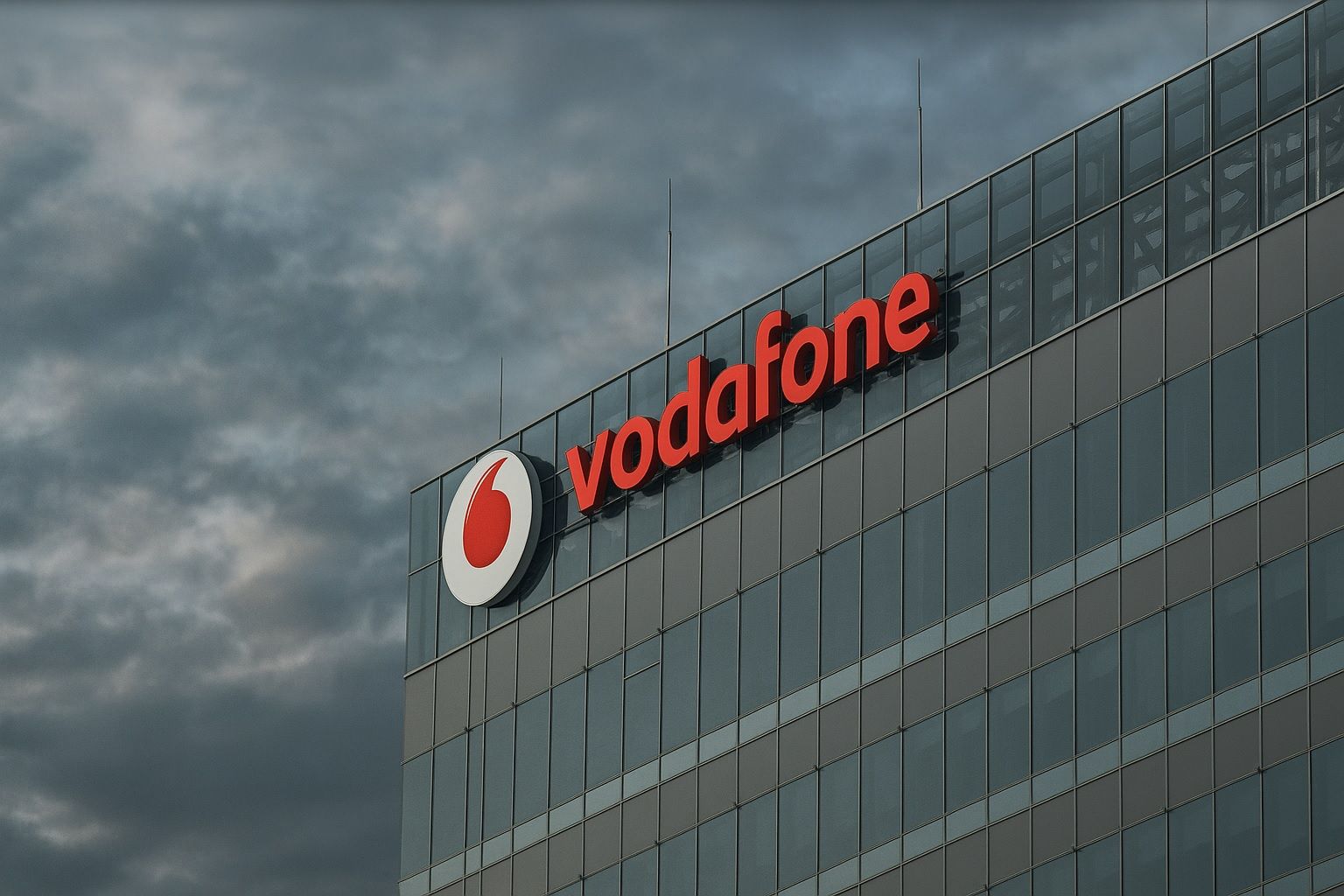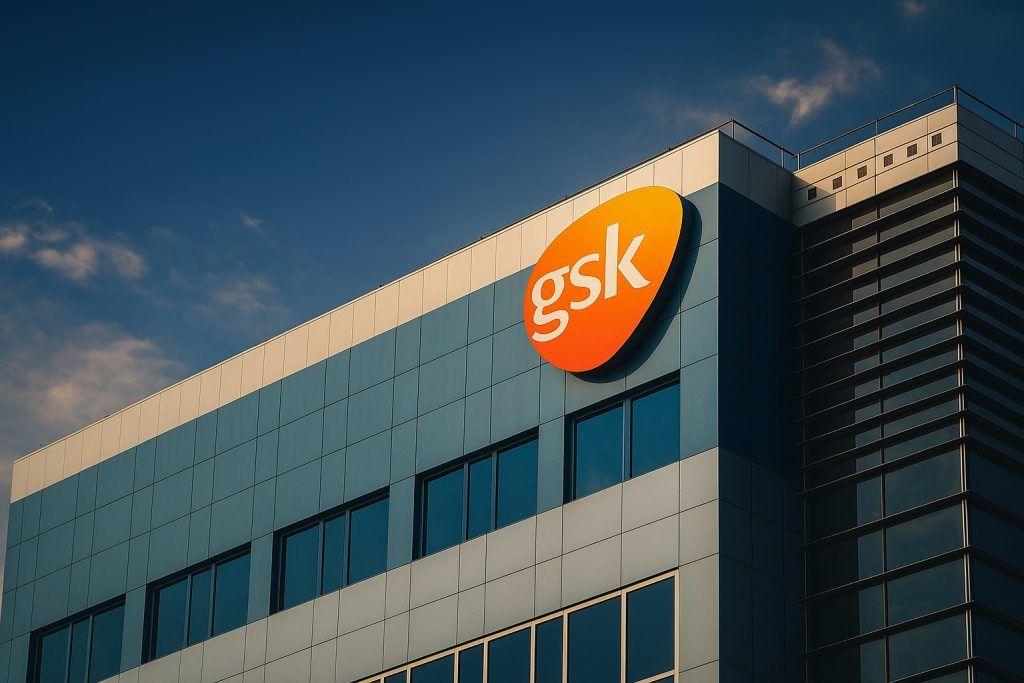Vodafone Group Public Limited Company (LON: VOD, VOD.L) traded lower in London on Thursday, 20 November 2025, even as the wider FTSE 100 rallied. The key driver was not new bad news, but the stock going ex‑dividend for its latest interim payout, plus routine buyback activity under the group’s new €500 million share repurchase programme.
Below is a detailed look at Vodafone’s share price today, the ex‑dividend mechanics, the ongoing buyback, and how all of this fits into the company’s broader turnaround story.
Vodafone share price today: VOD slips around 1.7% near 90p
Data from London South East shows Vodafone shares trading in a narrow band between roughly 89.6p and 90.6p on Thursday, after opening at 90.02p, with volumes around 8.5 million shares. [1]
By the London close, Hargreaves Lansdown quoted a sell price of about 90.26p, with the site explicitly noting that prices were “as at close on 20 November 2025”. The previous close was 91.78p, implying a fall of around 1.6p, or roughly 1.7%, on the day. [2]
Over the last 12 months, Vodafone has traded between about 62.40p and 96.32p, with London South East data indicating a one‑year price gain of roughly 26–27% before dividends — a sharp recovery from the lows seen in April 2025. [3]
Underperforming a rising FTSE 100
While Vodafone edged lower, the FTSE 100 spent most of the session in positive territory. Sharecast’s London open report put the index up around 0.7% at 9,570 in early trade, boosted by strong gains in Halma and Games Workshop after upbeat earnings news. [4]
Later in the afternoon, the Evening Standard reported that the FTSE 100 had rallied by nearly 60 points to 9,567, with Nvidia’s blockbuster results lifting global risk appetite. On London’s fallers board, ex‑dividend Vodafone was singled out, down 1.6p to about 90.1p alongside JD Sports. [5]
TradingView’s market wrap likewise listed Vodafone (‑1.5%) and Diageo as among the names capping the FTSE 100’s advance. [6]
In other words, Vodafone’s weakness today is stock‑specific and technical, rather than a sign of broader market stress.
Ex‑dividend day explains most of today’s move
The main reason Vodafone lagged the market is simple: today is ex‑dividend day for its interim payout.
In its H1 FY26 results, Vodafone’s board confirmed an interim dividend of 2.25 eurocents per share, matching last year’s interim but now sitting within a newly announced progressive dividend policy. The company’s official timetable sets: [7]
- Ex‑dividend date (ordinary shares): 20 November 2025
- Record date: 21 November 2025
- Payment date: 5 February 2026
Hargreaves Lansdown also flags the stock as “Ex‑dividend today”, with the same 20 November ex‑date and 5 February payment date. [8]
Broker and data platforms including DividendMax and online brokers picked up the event, highlighting that the next Vodafone dividend “will go ex today” for 2.25 eurocents per ordinary share. [9] Meanwhile, Futu’s coverage of Vodafone’s US‑traded line (VODPF) also emphasised the 20 November ex‑dividend date, reminding investors that share prices typically drop by roughly the dividend amount as that value is paid out in cash instead. [10]
Given that the interim dividend translates to just under 2p per share in sterling terms, today’s roughly 1.6p decline in the London price is broadly in line with that mechanical ex‑dividend adjustment. The move tells us more about how dividends work than about a sudden change in the market’s view of Vodafone’s prospects.
€500 million share buyback: fresh transaction notice today
Alongside cash dividends, Vodafone is increasingly using share buybacks to return capital.
On 11 November 2025, the group announced a share repurchase programme of up to €500 million, scheduled to run from 11 November 2025 to 4 February 2026. Merrill Lynch International has been mandated to buy Vodafone shares on the market under this programme, with the stated intention of reducing the company’s share capital and managing dilution from share schemes. [11]
As part of the programme, Vodafone has been issuing daily “Transaction in Own Shares” regulatory announcements. The latest notice, released this morning (20 November), confirmed that: [12]
- On 19 November 2025, Vodafone purchased 21,510 ordinary shares.
- The highest price paid was 93.38p, the lowest 92.00p, and the volume‑weighted average price was 92.51p.
- The shares will be held in treasury, taking treasury holdings to about 1.82 billion shares, with 23.84 billion Vodafone shares in issue excluding treasury stock (broadly consistent with London South East’s share count data). [13]
TipRanks picked up today’s notice too, framing the buyback as an effort to manage Vodafone’s capital structure and potentially enhance shareholder value, while its AI‑based “Spark” model currently rates the stock as Neutral, despite at least one human analyst maintaining a Buy rating with a price target above the current level. [14]
While the 21,510‑share purchase reported today is small relative to Vodafone’s average daily volume of roughly 58 million shares, the €500 million ceiling gives the programme scope to retire a meaningful number of shares if fully executed over time. [15]
H1 FY26 results: revenue growing, profits mixed, cash flow in focus
Investors’ current optimism about Vodafone’s dividends and buybacks is rooted in an improving underlying performance, albeit with some moving parts.
In its H1 FY26 results (six months to 30 September 2025), Vodafone reported: [16]
- Revenue: €19.61 billion, up 7.3% year on year.
- Service revenue: €16.33 billion, up 8.1%.
- Adjusted EBITDAaL: €5.73 billion, up 5.9%.
- Operating profit: €2.16 billion, down about 9%, reflecting higher depreciation, amortisation and restructuring costs.
- Basic EPS (continuing operations): 3.38 eurocents versus 3.92c a year earlier, while adjusted basic EPS jumped to 6.92c from 4.84c.
Management now expects to deliver results at the upper end of its FY26 guidance ranges, targeting: [17]
- Adjusted EBITDAaL: €11.3–€11.6 billion
- Adjusted free cash flow: €2.4–€2.6 billion
Reuters and other outlets noted that a key turning point was a return to revenue growth in Germany, Vodafone’s largest market, after regulatory changes in 2024 had weighed heavily on TV and broadband revenues. At the same time, service revenue continued to grow in the UK, Turkey and Africa, and integration of the recently completed Vodafone–Three UK merger is said to be progressing well. [18]
Crucially for income investors, the board used these results to formalise a progressive dividend policy. According to the H1 announcement and subsequent commentary: [19]
- Vodafone plans to grow its full‑year dividend per share by about 2.5% in FY26.
- The interim dividend will, from now on, be set at 50% of the prior full‑year dividend.
That combination of improving cash generation, a commitment to gradual dividend growth and a sizeable buyback is central to the current investment case for Vodafone.
Strategic backdrop: portfolio reshaping and emerging‑market leverage
Today’s share price action also sits against a backdrop of major strategic change:
- Vodafone has agreed to sell its Italian and Spanish operations, for roughly €8 billion and €5 billion respectively, as part of a push to exit structurally challenged markets and simplify the group. [20]
- In the UK, it has completed a €16.5 billion merger of Vodafone UK with CK Hutchison’s Three, creating the country’s largest mobile operator and a key pillar of its long‑term growth story. [21]
Outside Europe, Vodafone continues to have exposure to high‑growth markets, notably via Vodacom in Africa and its minority stake in Vodafone Idea (Vi) in India.
On that front, there was another fresh piece of news today: IT services group Kyndryl announced a three‑year extension of its partnership with Vodafone Idea, focused on automating Vi’s IT operations and strengthening its cyber‑resilience. The press release describes a new delivery model based on automation and data‑driven insights, aiming to reduce manual interventions, lower costs and improve service reliability. [22]
While this Indian partnership news is more relevant to Vodafone Idea than to the London‑listed parent, it reinforces the theme that the broader Vodafone ecosystem continues to invest in network resilience, automation and digital transformation.
Valuation, dividend yield and what could move the share price next
At today’s c. 90p share price, Vodafone’s market capitalisation is around £21.5 billion, based on roughly 23.84 billion shares in issue. [23]
On income metrics, the stock remains squarely in high‑yield territory:
- London South East data points to a dividend yield of about 6.3% at current levels. [24]
- Hargreaves Lansdown’s summary, which uses a slightly different methodology and time frame, shows a trailing yield just over 4%. [25]
Either way, Vodafone’s yield is well above the broader FTSE 100 average, helping explain why the shares are closely watched by income‑focused investors.
Near‑term drivers
In the short term, Vodafone’s share price is likely to be driven by:
- Technical factors tied to today’s ex‑dividend adjustment and the daily flow of buyback transactions.
- Broader market sentiment, particularly around interest rates and risk appetite, given that high‑yield telecoms are often treated as “bond proxies”.
- Ongoing FTSE 100 dynamics, where index‑wide rallies or sell‑offs can pull the stock up or down regardless of company‑specific news. [26]
Medium‑term catalysts
Looking further ahead, key catalysts that could move Vodafone’s share price include:
- Regulatory approvals and integration progress for the Vodafone–Three UK merger, including any conditions affecting network investment or competition. [27]
- The closing and deployment of proceeds from the Italian and Spanish disposals, and how effectively those funds are used to reduce debt, invest in growth or extend shareholder returns. [28]
- Vodafone’s ability to sustain revenue growth in Germany and other core markets while keeping a tight rein on costs and capex. [29]
Analyst views remain divided. Hargreaves Lansdown’s news feed recently highlighted an UBS downgrade to “sell”, citing potential execution and regulatory risks, while TipRanks shows at least one analyst still recommending “Buy” with a target price above today’s level, even as its in‑house AI model labels the shares Neutral. [30]
For income‑oriented investors, Vodafone’s blend of a high yield, a newly progressive dividend policy and an active buyback programme is likely to remain the main attraction. Growth‑focused investors, meanwhile, will want to see clear evidence that the leaner, more focused Vodafone can convert its portfolio reshaping and network investments into sustainably higher earnings and free cash flow.
Important note
This article is provided for news and information purposes only and does not constitute investment advice or a recommendation to buy, hold or sell Vodafone shares. Anyone considering an investment should conduct their own research and, where appropriate, consult a regulated financial adviser.
References
1. www.lse.co.uk, 2. www.hl.co.uk, 3. www.lse.co.uk, 4. www.sharecast.com, 5. www.standard.co.uk, 6. www.tradingview.com, 7. investors.vodafone.com, 8. www.hl.co.uk, 9. www.dividendmax.com, 10. news.futunn.com, 11. www.londonstockexchange.com, 12. www.investegate.co.uk, 13. www.investegate.co.uk, 14. www.tipranks.com, 15. www.tipranks.com, 16. www.investegate.co.uk, 17. investors.vodafone.com, 18. www.reuters.com, 19. investors.vodafone.com, 20. www.ft.com, 21. www.ft.com, 22. www.kyndryl.com, 23. www.lse.co.uk, 24. www.lse.co.uk, 25. www.hl.co.uk, 26. www.sharecast.com, 27. markets.ft.com, 28. www.ft.com, 29. www.investegate.co.uk, 30. www.hl.co.uk










